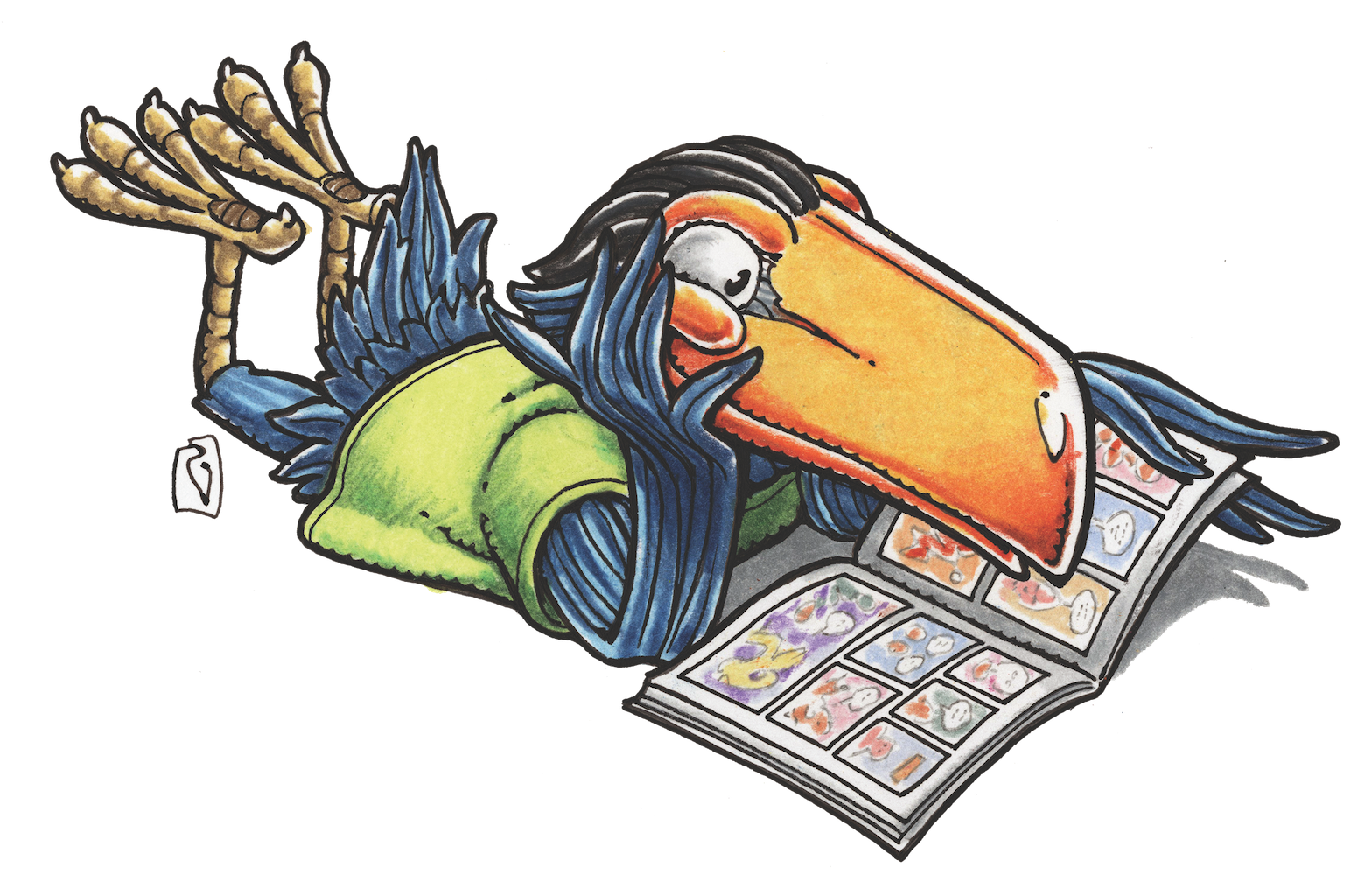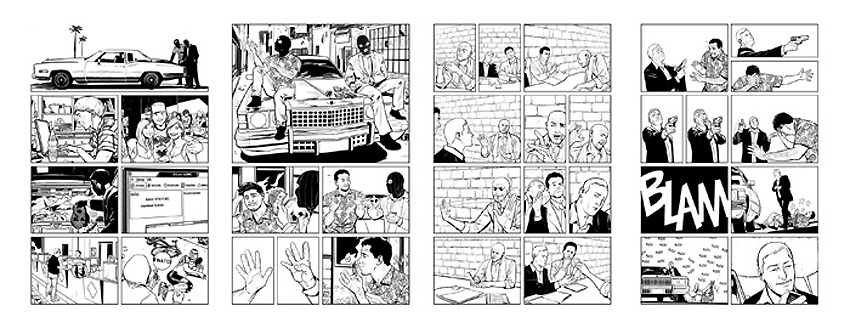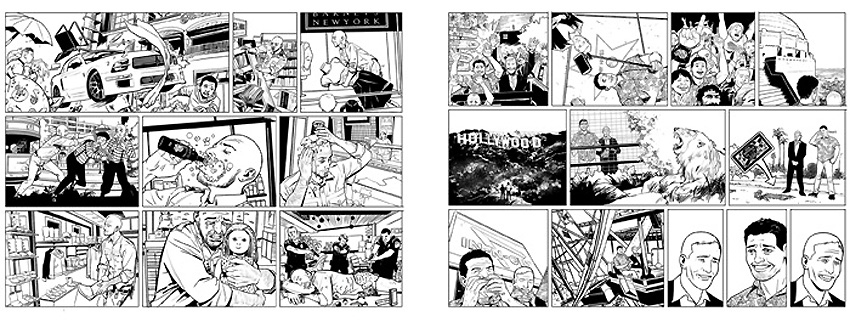STEVE LIEBER’S DILETTANTE
Dilettante 043: Constraints as a Creative Tool


Like many people who work in creative fields, my greatest enemy is the blank white page. Limitless options are a nightmare for me. I need walls to bounce off of, rules to obey or defy, some limitation on what I can do with the project I’m working on. What I’ve learned as a creative person is this: if I want to do my work effectively, I don’t just need a reason to do something, I need a reason to not do something else. Sometimes these are inherent in the job. If I’m hired to create an 8-page comic, that eliminates a lot of possible stories that would require more space. If the story needs to be reproduced in black and white, I’m not going to make color an important story point. If the intended audience is children, I’m going to steer away from R-rated content. And if my story is in an established genre, I’ve got the tenets of that form to work with as well.
But sometimes these sorts of basic constraints aren’t enough for me. I need to take a few more options off the table, to work with more structure, to really begin to make interesting decisions. And if that structure isn’t handed down from a publisher or client, I’ll create it myself.
Writing prompts
When I need a starting point for any creative endeavor, I’m fond of working with writing prompts.
Letters of the Alphabet
Pick a letter and jot down a list of words that start with it. Try a mixture of nouns and verbs. When you have a list of fifteen or so, start looking for associations and possibilities.
Bibliomancy
This is a favorite. Grab a novel or a book of narrative non-fiction. Ask a question about the story you want to tell. Flip to a page at random and point to a sentence. Jot it down. Do this again. Look for possibilities in the juxtaposition of these two sentences and the story problem you’re trying to solve.
Photos
This bibliomancy approach works with images, too. Get a big collection of photographs, ideally ones that aren’t all on one theme. Jot down the problem you’re trying to solve and flip through to a photo. Scrutinize them carefully, and you’ll probably find your mind applying the contents of the photo to create possible answers to your problem.
Oblique Strategies
In the 1970s, Brian Eno and Peter Schmidt created a deck of cards, each of which featured some sort of constraint, designed to get artists unblocked by encouraging them to approach problems from a different angle. You can generate random picks from the deck by clicking here.
There are countless great constraints artists and writers can apply to their process. The Constrained Writing entry in Wikipedia lists quite a few; click here to read it.
Drawing constraints
Restrict the Tools You Use
Some of the biggest jumps I’ve ever made as a cartoonist came from setting up restrictions on what tools I’d allow myself to use. I’ve drawn stories where I said I had to diligently reference every figure with a photo. Other stories where I didn’t allow myself to use any photos whatsoever. I’ve tried pages where I only used a brush, or only a dip pen, or only two markers. You can do this with paper as well. Set a rule that you only draw with India ink on heavily textured white paper for all present-day scenes, while drawing your flashbacks in a dark grey ink-wash on smooth tinted paper, and add white highlights with gouache.
Restrict Technique
I’ve had great results setting up rules limiting the sorts of marks I can use in a scene or a story. No hatching or crosshatching was one. I could only use simple outlines, and areas of solid black. Look at the way artists like Chris Samnee and David Lloyd have eliminated outline entirely throughout some stories. Other artists only allow themselves to draw with an uninflected outline and don’t depict light and shadow whatsoever. Artists working in color might use only flat colors with a story. Or they can limit their palate to a couple of hues. Every scene could be keyed to its own symbolic or literal color. One story might be carefully colored within the linework, defining the local color of every individual object on a page, another could let the color spill loosely across forms, binding whole planes of depth together and only defining areas of focus.
If a story doesn’t require precision or accuracy, you could skip penciling entirely, only drawing directly in ink, and incorporating any construction-lines or mistakes into the overall look of the work.
You can set rules for perspective. In Superior Foes of Spider-Man, I drew most of the comic following the rules of normal academic perspective. But for a couple of fanciful sequences that I wanted to look like a side-scrolling video game, I switched to isometric perspective (a type of drawing where parallel lines stay parallel rather than converge to a vanishing point.) You could decide that all of your scenes will be viewed from a certain eye level: a child’s POV, say, or maybe tell the story gazing up at everything from ground level, like the POV of someone in the orchestra pit at a theater looking up at the stage.
You can set up rules for how pages are laid out. Decide that every page is designed around one important central image, and that every other panel will be smaller and less important. Or restrict yourself to a formal grid, and make all of your pages within that framework. On my current project, The Fix at Image, most pages are built from a 4×4 grid: four rows of four panels each. I don’t do many 16-panel pages so I usually combine some of these panels into layouts like these:

My main exceptions to this rule are splash pages and double page spreads. The Fix is full of conversations and subtle actions and movements, but in just about every issue, we’ve had some eruption of activity that’s heavy on slapstick and broad gestures. For these scenes we abandon the disciple of the 4×4 grid and burst into a different grid entirely.

Apply a Formal Structure
Maybe your story will start with a splash, then page two is two panels, page three, three panels, page four, four, and so on, until page ten, at which point every page has one less panel with the story ending on another splash. Or maybe every page is a splash.
Every scene could start with a shot of a city street. Or every scene might end on a shot of the weather. Every right-hand page could have a tall thin panel that communicates the main character’s emotional state. Or perhaps you could introduce a visual refrain. Dylan Meconis’ Family Man frequently features splash pages that focus on round, white objects, right in the center of the page.
You could use decades as a structure, and have every scene somehow subtly reflect what was happening in history in a different decade. Or start every chapter at its ending, and then move back in time to reveal how your character got there.
Novelist and essayist Zadie Smith refers to this sort of imposed structure as “scaffolding.”
Each time I’ve written a long piece of fiction I’ve felt the need for an enormous amount of scaffolding. With me, scaffolding comes in many forms. The only way to write this novel is to divide it into three sections of ten chapters each. Or five sections of seven chapters. Or the answer is to read the Old Testament and model each chapter on the books of the prophets. Or the divisions of the Bhagavad Gita. Or the Psalms. Or Ulysses. Or the songs of Public Enemy. Or the films of Grace Kelly. Or the Four Horsemen of the Apocalypse …
Scaffolding holds up confidence when you have none, reduces the despair, creates a goal―however artificial―an end point.
And this brings me to the most important part of this. All of these rules and restrictions are here to help you create better work. By all means, set rules for yourself, and enjoy the fascinating new hops your work takes as you bounce it off the structures you’ve erected. But if following a rule means doing something that just doesn’t work, ignore the rule. Suppose your rule is “no hatching or cross-hatching. only thin outlines and areas of solid black.” Then after 50 pages, you need some grey to clarify an important story point in an important panel, and you just can’t solve the problem with black and white? Hatch away, and feel fine, knowing that your number one job is telling the story. The rule is just there to help you unify your pages and get things done. As Smith says:
Later, when the book is printed and old and dog-eared, it occurs to me that I really didn’t need any of that scaffolding. The book would have been far better off without it. But when I was putting it up, it felt vital, and once it was there, I’d worked so hard to get it there I was loath to take it down. If you are writing a novel at the moment and putting up scaffolding, well, I hope it helps you, but don’t forget to dismantle it later.
Have you employed constrains in your own work? Get in touch and let me know! You can reach me on Twitter @steve_lieber or Facebook.
Steve Lieber’s Dilettante appears the second Tuesday of each month here on Toucan!